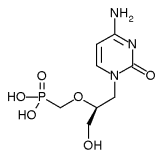Isolating persons infected with smallpox and immunizing those who had contact with them is the best strategy for containing a potential outbreak of the disease, according to a new policy statement by the American Academy of Pediatrics (AAP). The statement appears in the October 2002 issue of Pediatrics.
This strategy, also called ring vaccination, is the same method recommended by the Centers for Disease Control and Prevention. It is based on the knowledge that vaccination can prevent or ameliorate the severity of the disease if given within three to four days of exposure and can decrease symptoms if given within the first week of exposure.
Since the attacks on September 11, 2001, fears have increased that smallpox virus stocks may be in the hands of bioterrorists. Because most of the U.S. population is considered unprotected against the disease, there is debate over whether smallpox vaccination should resume.
Before smallpox immunization was discontinued in the United States in 1972, children were immunized beginning at age one. The concentration of neutralizing antibodies declines significantly over a five- to 10-year period, and people who were immunized as infants or children before 1972 are unlikely to still be fully protected against the disease.
Although there is speculation that cidofovir (Vistide) may offer some benefit, no known antiviral agent to treat smallpox is available. Infected patients should receive supportive care, including hydration and treatment of secondary bacterial infections, when appropriate.
Approximately 15 million doses of smallpox vaccine are available in the United States, and a previously unaccounted-for 85 million doses held by Aventis Pasteur are still biologically active. Recent studies suggest that the vaccine can be diluted as much as 1:10 and still be effective. The government has contracted for an additional 200 million doses of tissue culture-derived vaccine, which are currently in production and still must be approved by the U.S. Food and Drug Administration.
In the event of a known bioterrorist release of the smallpox virus, vaccine would be administered to people exposed to the virus. If vaccine is given within three to four days of exposure, immunity can develop before the disease occurs. Postexposure immunization is recommended for people who had face-to-face, household contact with, or who had been in proximity to, a person with active smallpox lesions, a person who has cared for such a patient, or a person exposed to laboratory specimens or bedding from an infected patient. This type of ring vaccination program would most effectively use available stocks of the vaccine while exposing a minimal number of people to the risks of immunization.
Other recommendations in the AAP statement include:
* Ongoing reassessment of the risk of smallpox as a bioterrorism agent and sharing any change in that assessment with public health authorities.
* Continued attempts to develop a safer and more effective smallpox vaccine.
* Educating health care professionals about the identification of smallpox.
* A plan by public health authorities to respond immediately to a suspected or confirmed case of smallpox.
* Educating the public about the ring vaccination plan and the possible serious adverse side effects of smallpox immunization.
The American Academy of Family Physicians issued a position statement on smallpox vaccination in June 2002, and it is available at www.aafp.org/ x10636.xml.
COPYRIGHT 2003 American Academy of Family Physicians
COPYRIGHT 2003 Gale Group



